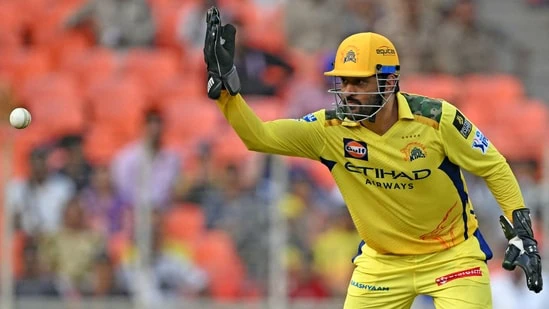Former India fielding coach R Sridhar shed light on what made Mahendra Singh Dhoni decrease wicketkeeping practice after playing eight to nine years of international cricket.
Despite his unconventional wicketkeeping style that often defied textbook methods, MS Dhoni carved out a legacy as one of the finest wicketkeepers the game has ever seen. His lightning-fast stumpings, unmatched presence behind the stumps, and ability to read the game made him one of the smartest cricketing brains. Dhoni registered a staggering 829 dismissals as a glovesman in his illustrious international career, comprising 634 catches and an unmatched 195 stumpings, a record that underlines his brilliance as one of the sharpest wicketkeepers the game has witnessed.
Dhoni, who still plays in the IPL for Chennai Super Kings, claimed six catches and inflicted five stumpings in the last season, showing that he is not slowing down at the age of 44.
Meanwhile, Sridhar, who worked with the legendary wicketkeeper in the past during his stint as India’s fielding coach, revealed that the former skipper stopped practising his wicketkeeping skills after reaching a certain stage in his career.
“MS Dhoni did not practice wicketkeeping after playing eight or nine years of international cricket. While he was growing up, and while he was yet to make a mark in international cricket, let’s say before 2007, before 2005, he worked a lot on his wicketkeeping skills. He had a very good technique; he had a technique of his own. I wouldn’t call it unorthodox but very effective,” Sridhar told Cricket.com
“MS Dhoni very smartly decreased the workload”
He pointed out that Dhoni openly acknowledged the need to manage his workload while featuring in all three formats. To find the right balance, the 2011 World Cup-winning skipper reduced traditional wicketkeeping routines and shifted his focus towards quick reaction-based drills.
“He had practiced a lot, and he self-admittedly said that once he started playing three formats for India, the workload was so much that there was no need for him to practice more because his fingers were taking a beating, collecting those deliveries behind the stumps and throws, and everything else. That is when he very smartly decreased the workload as a wicketkeeper. Instead, he did some small reaction drills which kept him sharp and his gloves lightning fast,” he added.
